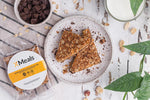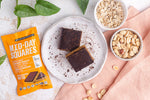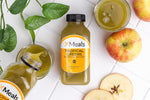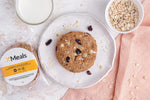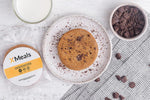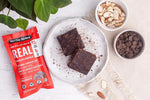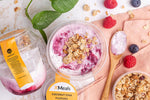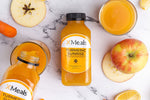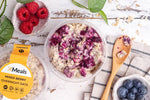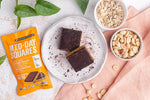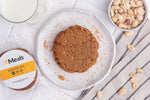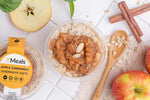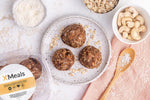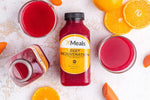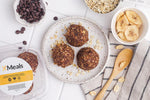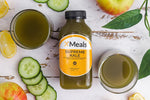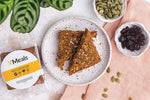
Freezer Meal Prep For Ready-To-Eat Meals
Modern food science has ensured that there is never-ending variety in meals and ingredients available both in brick-and-mortar stores and online. The cornucopia of food options available to us today can be intimidating; not only is there so much variety as to cause paralysis of choice but that variety is constantly expanding. Good freezer meal prep will allow you to sample that wealth of choice and save your favourite discoveries for later!.
This can lead to issues: what if you buy the ingredients for a recipe, find you do not like the dish it produces, and are left with a bunch of unwanted, left-over ingredients. This leads either to further enjoyable food choices or to unfortunate, unnecessary wastage.
A common, and excellent, solution to this problem is ready-to-eat meals: full meals, carefully composed of complimentary ingredients, pre-cooked and packaged for you to take home and store for use at your leisure - a fantastic idea! And with freezer meal prep, the lifespans of these incredible ready-to-eat meals can be extended even further.
In this guide we will look at freezer meal prep, what healthy meals can be frozen and reheated, and which ready-to-eat meals should never be frozen. Let’s get started!
Containers for Freezer Meal Prep

We will now look at how to freeze meal prep. Freezer meal prep is relatively simple, especially for ready-to-eat meals. An individual portion of a meal should be stored in a plastic or tupperware container with a sealable lid. For freezer meal prep storage periods of longer than two weeks it is advisable to also wrap the plastic or tupperware container in clingfilm or similar airtight wrap.
If there is a build up of frost on the container while it is in the freezer this may be an indication of too low of a freezing temperature. Check the food for freeze burn and consider setting your freezer to a higher temperature. It is useful to use clear containers as it is easier to check on the contents of these containers without opening and risking contamination.
Temperatures for Freezer Meal Prep
It is important to freeze your meal prep at the correct temperature. If ready-to-eat meals are frozen at too cold a temperature then the food will suffer freeze burn, a process in which too much moisture is lost to the desiccating effects of the freezing air in the freezer. This leaves the food ruined and leads to avoidable food waste.
The surface of properly frozen food, food containers and food packages, including ready-to-eat meals, should be mostly free of frost and freezer burn. For most foods, this means freezing your meal prep between -18°C (considered optimum) and 0°C (considered too warm to reliably keep frozen meal prep safe due to fluctuations in temperature), with freezer burn very likely above -25°C.
Reheating Frozen Ready-to-Eat Meals

Ready-to-eat meals can be reheated in a number of different ways. Microwaves, ovens and, for particularly saucy or stew-like dishes, even the hob are all common tools for reheating freezer meal prep.
Most common is the microwave! Most microwaves have dedicated defrost settings that make defrosting and reheating ready-to-eat meals a breeze.
An alternative method for reheating frozen ready-to-eat meals is the oven. Heat the oven to 350°F/176°C/gas mark 4. Remove the frozen ready-to-eat meal from its freezer container and place it in an oven-safe container. Transfer the frozen meal to the oven. Bake for 30 minutes or until the internal temperature of the container reaches 170°F/76°C.
If the ready meal has a liquid consistency - for example curries, stews and soups - then the hob is also an option for reheating. Simply place the frozen food into a pan with a small amount of water and heat on a low to medium heat until defrosted, before turning the heat up to medium and cooking the food for 7 minutes at that temperature, or until boiling.
Which Ready-To-Eat Meals Not To Freeze
Most foodstuffs can be frozen, and the freezer meal prep procedures outlined above are appropriate for most ready-to-eat meals.
However, certain ready-to-eat meals, especially those featuring ingredients that are mixtures of substances with different freezing and boiling points (such as many vegan cheese and milk alternatives, for example), may not be appropriate for freezing. Freezing ready-to-eat meals with ingredients that will separate or curdle as the different components freeze and thaw will ruin the meal. Proper freezer meal prep includes identifying such dishes and refrigerating them for consumption in the near future rather than freezing them for consumption further down the line.
The most important thing is to NEVER freeze and reheat a ready-to-eat meal that has already been frozen and reheated. Bacteria can develop in the uneaten food after reheating and, as the cycle is repeated, it becomes more and more likely that some of these bacteria will survive the freezing and reheating and give you food poisoning! Always stay safe and only ever freeze and reheat a ready-to-eat meal ONCE.
Wrapping Up This Ultimate Freezer Meal Prep Guide

In conclusion, freezing your meal prep is a great way to cheaply save good food for later at the individual portion size! ready-to-eat meals can usually be frozen safely and, with a bit of knowledge about healthy meals to freeze and reheat, can sustain you long-term with a variety of old favourites and new experiments always available.
So long as you avoid freezing dense composite foods, like vegan cheese and milk alternatives, fizzy drinks, salad and cooked vegetables you can’t go wrong. Most important of all: NEVER refreeze and reheat ready-to-eat meals that have already been frozen and reheated.
Bearing these simple rules in mind it’s time to get started on your new, penny-saving, health-boosting freezer meal prep practices!
 Store Location:
Store Location: 

